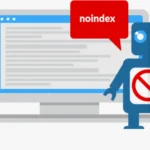What are Search Engine Result Pages?


Search Engine Result Pages (SERPs)
Introduction:
A Search Engine Results Page (SERP) is the interface that search engines like Google, Bing, and Yahoo present to users after they enter a query into the search bar. This page is designed to provide users with a comprehensive and relevant list of results that best match their search intent.
There are 5 main components related to SERP:
- Organic Search Results: These are the main listings on the SERP and are not paid for. Search engines use complex algorithms to rank web pages based on factors like relevance, authority, and quality of content. Websites with strong SEO strategies often appear higher in organic search results, attracting more clicks and traffic.
- Paid Advertisements: Paid ads, also known as sponsored results, appear at the top and bottom of the SERP. Advertisers bid on specific keywords, and their ads are displayed to users who search for those keywords. Paid ads are marked with labels like “Ad” or “Sponsored” to differentiate them from organic results.
- Featured Snippets: Featured snippets are brief summaries or answers extracted from web pages that aim to directly answer user queries. They appear at the top of organic search results and can include text, lists, tables, or images. Featured snippets provide users with immediate information without requiring them to click through to a website.
- Image and Video Carousels: SERPs may include image and video carousels, showcasing relevant images and videos based on the user’s query. Users can scroll through these carousels to view visual content directly on the search results page.
- Related Searches: At the bottom of the SERP, search engines may provide a list of related searches based on the user’s query. These suggestions help users refine their search and explore additional topics related to their initial query.
Overall, SERPs are dynamic and tailored to provide users with a diverse range of content formats, including web pages, images, videos, ads, knowledge panels, and more. Understanding the components and layout of SERPs is essential for digital marketers and website owners to optimize their content and SEO strategies for improved visibility, click-through rates, and user engagement in search engine results.

Relation Between SERP and SEO
The relationship between SERP (Search Engine Results Page) and SEO (Search Engine Optimization) is intricate and significant, as SEO directly impacts a website’s visibility and ranking on SERPs. Here’s how they are related:
Visibility and Ranking: SEO strategies aim to improve a website’s visibility and ranking in organic search results on SERPs. By optimizing content, keywords, meta tags, and other SEO factors, websites increase their chances of appearing higher in SERPs for relevant user queries.
Click-Through Rates (CTR): Higher rankings in SERPs often lead to increased click-through rates (CTR), as users are more likely to click on top-ranking organic results. Effective SEO practices contribute to improved CTR by attracting targeted traffic to the website.
Relevance and User Experience: SEO focuses on creating relevant, high-quality content that meets user intent and provides a positive user experience. When search engines recognize the relevance and quality of a website’s content, they reward it with higher rankings in SERPs, leading to increased visibility and traffic.
SERP Features: SEO strategies also target SERP features such as featured snippets, knowledge graphs, and image carousels. By optimizing content for these features, websites can enhance their visibility and stand out in SERPs, capturing more clicks and engagement from users.
Competitive Advantage: Effective SEO gives websites a competitive advantage by helping them outrank competitors in SERPs. By continuously optimizing and adapting SEO strategies based on search engine algorithms and user behavior, websites can maintain and improve their visibility and rankings over time.
Local SEO: For businesses targeting local customers, local SEO plays a crucial role in appearing in local SERP features like Google Maps listings and local pack results. Optimizing for local search helps businesses attract nearby customers and improve their visibility in relevant local searches.
The relationship between SERP and SEO underscores the importance of strategic optimization efforts to achieve higher visibility, rankings, and click-through rates in search engine results, ultimately driving organic traffic and conversions for websites.
Partnered with Naumaan Oman
Recent Posts
Working Together Ideas come to life
No matter how big your company is, as you expand and reach new highs you’ll want an agency to have your back. One with a process
360presence@gmail.com

© 2023 360PRESENCE All rights Reserved
















